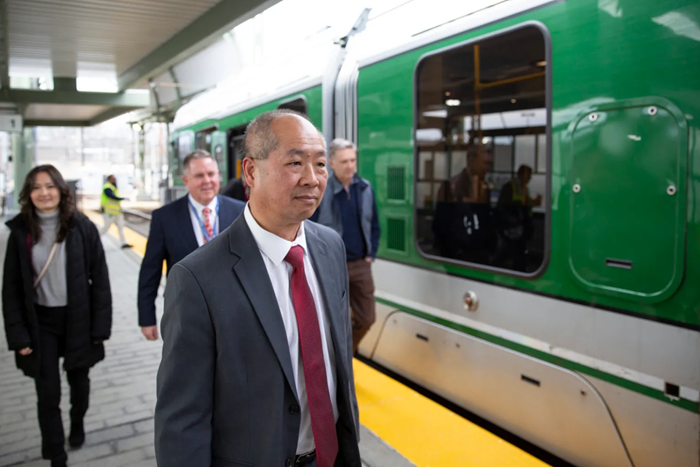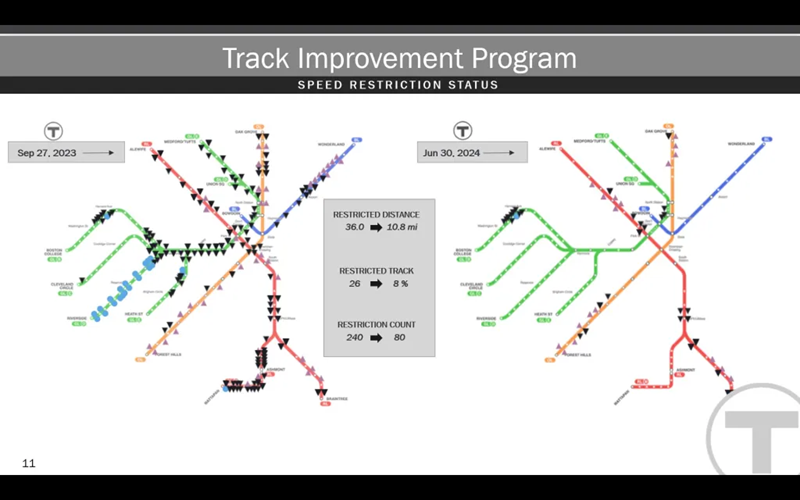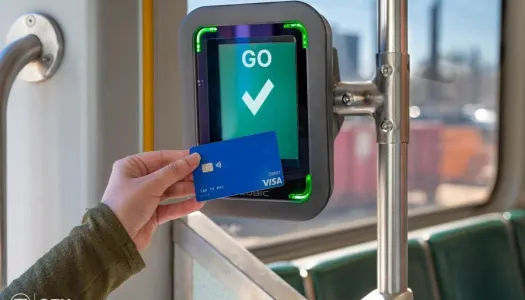MBTA GENERAL MANAGER Phillip Eng is beginning to make the case that the transit authority is a reliable transportation option.

MBTA General Manager Phillip Eng. [File photo by Chris Lisinski/SHNS]
At a board meeting last week, Eng acknowledged the MBTA remains a work in progress, but he said service is improving, employee levels are continuing to rise, and the slow zones that have plagued the T for most of the last year are rapidly disappearing.
Eng also announced that a 24-day shutdown of the Braintree branch of the Red Line in September will eliminate 20 speed restrictions and lay the foundation for raising the top speed of trains on that branch from 40 to 50 miles per hour by early December. Subway trains haven’t gone that fast for decades, T officials say.
Eng said the Red Line work will cut the time of a roundtrip between JFK/UMass and Braintree by 24 to 27 minutes, or 36 to 41 percent.
Eng is demonstrating that he can make the T more reliable, but he may have an even tougher job ahead of him – convincing hundreds of thousands of riders who have abandoned the T to come back and start using it again.
Subway ridership took a big hit during the Covid pandemic and never recovered, in part because the system was unreliable. In March 2023, speeds on the entire system were briefly cut to 10 to 25 miles per hour when supporting documentation for a slew of rail repairs appeared to be missing or incomplete. That precautionary go-slow policy was subsequently lifted, but it was replaced with isolated slow zones across the system where track was defective, and trains had to go slow to avoid accidents.
Average weekday ridership has hovered near 51 percent of pre-Covid levels since January 2023. Last month, it was 359,402, just under 51 percent of what it was in June 2019. The T’s current five-year budget projection doesn’t anticipate a bump up in ridership any time soon.

But Eng is convinced that, if service improves, so will ridership. “There are some folks who love driving their cars and that’s fine,” Eng said on The Codcast back in March. “But take a look at the traffic and look at the amount of time you spend sitting in traffic. If you know that the system, the mass transportation system, is more reliable, more frequent, and providing the level of service that we’ve promised, I think people will start to try and use it again. There are folks that need to use it right now and we’re focused on making sure they have the best trip that they can. But we also know that as we start to show to the public that the system is going to get them where we promise to take them, I do think that people will come back.”
The general manager has pledged to eliminate all slow zones on the subway system by the end of this year. The number of weekly subway trips is increasing on every line and headways at peak travel times are down to less than 3 minutes on the Green Line, 5 minutes on the Blue Line, 6 minutes on the Red Line, and 7 minutes on the Orange Line.
The number of employees at the T has increased 21 percent since the start of 2023 and the number of bus operators is expected to hit 1,660 by the end of this year, an increase of nearly 12 percent over the same time period. Over the last year, the number of dropped bus trips overall has fallen from 8.7 percent to 2.2 percent and on key bus routes from 16.5 percent to 4.4 percent.
New Red and Orange Line trains continue to arrive slowly, and production of a new Green Line vehicle is expected to start next month. The new Green Line vehicles are big, the size of two current Green Line cars, which should allow fewer drivers to carry more passengers.
The map of slow zones is dramatically different. There were 240 slow zones covering 36 miles in September 2023. As of this week, those numbers are down to 72 slow zones covering 9.5 miles.
The T is now gearing up for slow zone removal work on the portions of the Green Line and Red Line next month, and then a big push from September 6 to September 29 on the section of the Red Line between Braintree and JFK/UMass. The work in August and September should cut the number of slow zones in half from its current level.
Eng cautioned that speeds on the Braintree branch of the Red Line won’t immediately rise to 50 miles per hour at the end of September. He said it will take an extra two months for drivers to receive training on operating at that speed and some equipment will have to be certified for that speed. (Some of the Red Line cars date to 1969.)

Eng said he is excited about not just building back but building back better. “Service is improving,” he said.
By Bruce Mohl
Commonwealth Beacon
